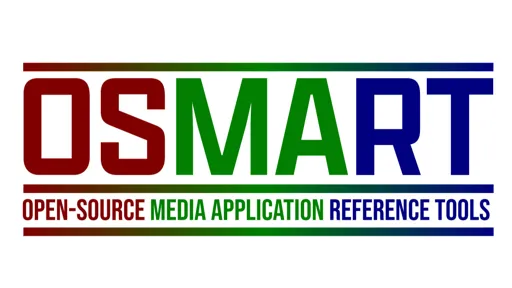
Jordi J. Giménez (5G-MAG) and Daniel Silhavy (Fraunhofer FOKUS)
You have probably heard someone saying, “Oh smart!” before, perhaps in a meeting when a good idea or a clever solution was presented. But have you heard about “OSMART” before?
First, a step back. The media industry is at a tipping point. It risks becoming solely a consumer of equipment and solutions, lacking a deep understanding of the underlying technology. This gap has been exacerbated with the rise of the internet, a domain traditionally shaped by other actors. The passive role of the media industry here hinders the ability to actively shape the development of technology and products.
Open-source tools offer a powerful avenue for media organizations to become active participants in technological advancement. OSMART stands for Open-Source Media Application Reference Tools. It is an initiative of several key organizations developing software tools in the space of media delivery.
Key objectives of the OSMART initiative are to raise awareness of software projects under development, to understand their applicability in the media delivery chain and, most importantly, to provide a central point, the OSMART Community on GitHub, that can serve as a valuable resource for developers and media professionals, providing information and shortcuts to a wealth of open- source media tools.
An inaugural OSMART workshop in May 2022 focused on identifying synergies and collaboration opportunities between the
invited organizations. Follow-up workshops in December 2023 and 2024 further expanded the reach and collaborative efforts. The full list of organizations that have participated in at least one OSMART workshop is:
- 5G Media Action Group (5G-MAG)
- Consumer Technology Association WAVE Project (CTA-WAVE)
- DASH Industry Forum (now merged with SVTA)
- DVB Project
- HbbTV Association
- Moving Picture Experts Group (MPEG)
- Streaming Video Tech Alliance (SVTA)
The most recent OSMART workshop took place (online) in December 2024. It featured updates on a range of open-source tools and projects. There follows a brief summary of what was presented. Links to all projects can be found in the OSMART GitHub community.
SVTA and DASH-IF
The SVTA and DASH-IF session introduced livesim2, a tool for live DASH streaming scenarios, and the widely used open- source DASH reference player dash.js. Both tools provide a foundation for many streaming implementations. They serve not only as reference implementations for the standardization and research communities but also as a foundation for many commercial products.
The SVTA Common Media Library is a collection of reusable components for media streaming implementations which, alongside the SVTA Sandbox, offers tools for setting up and testing streaming workflows.
CTA WAVE
The CTA WAVE session highlighted tools for ensuring high-quality media delivery. The Joint Content Conformance Project (JCCP) is crucial for validating the adherence of DASH and HLS content to industry standards, ensuring interoperability and a consistent user experience. The CTA WAVE Streaming Media Test Suite for Devices is a comprehensive suite of tests evaluating web-based media playback performance and compatibility across devices, offering valuable insights for manufacturers and content providers.
5G-MAG
The 5G-MAG session showcased innovative tools and technologies for next-generation media delivery. The 5G Media Streaming tools emphasize collaboration between media applications and mobile networks, focusing on network assistance, QoE/ consumption reporting, and UE data collection. The 5G Broadcast tools play a role in scaling television/radio delivery on streaming apps through a combination of unicast and broadcast delivery modes defined in 3GPP. Additionally, the tools have expanded with support on XR media and volumetric video.
DVB Project
The DVB Project session focused on advancements in DVB-MABR and DVB-I. The development of DVB-MABR Verification & Validation resources ensures robustness and interoperability for multicast ABR workflows. The DVB-I Reference Application is evolving in its capabilities, with the integration of DVB-NIP (Native IP broadcasting) for increased flexibility in hybrid broadcast and broadband services.
This article first appeared in the March 2025 issue of tech-i magazine.
